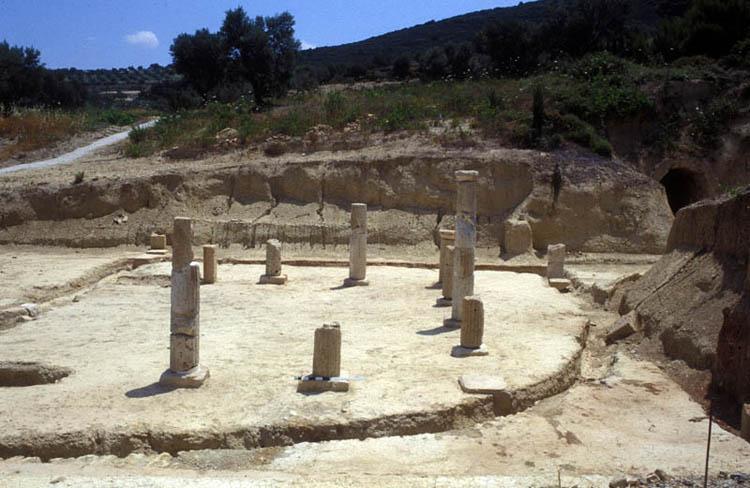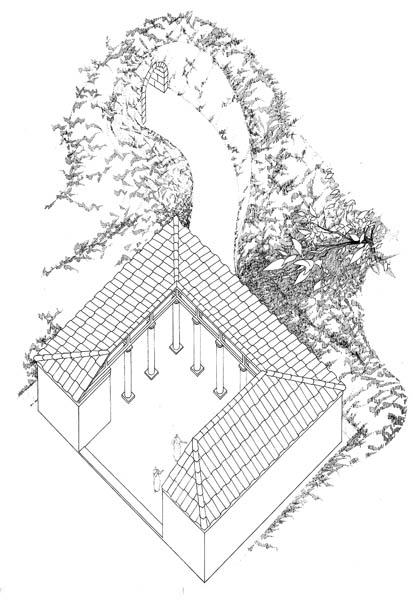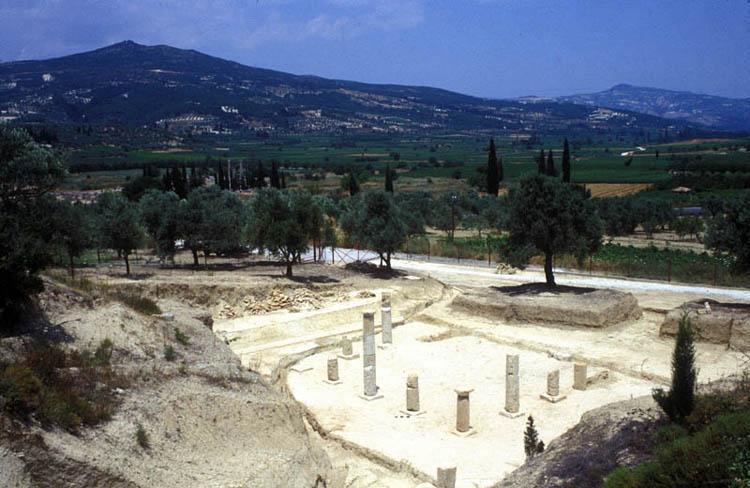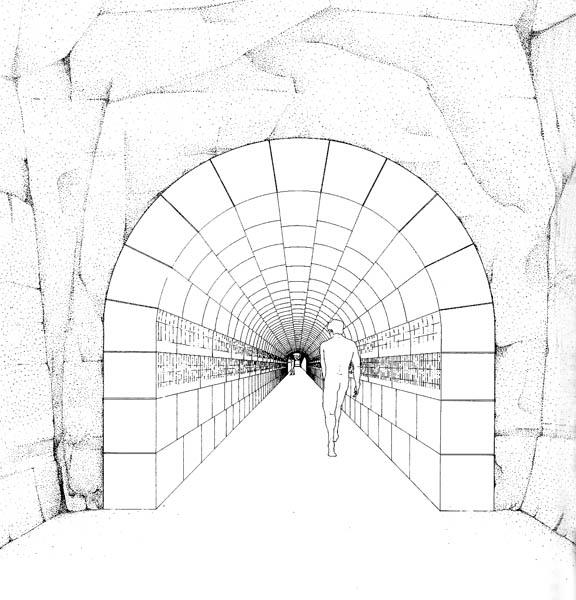
View of the locker room with the entrance tunnel at the right. (The curvilinear trench in the foreground was cut in the Roman period for a water channel after the stadium had ceased to be used for the Games).
At the far (west) end of the tunnel are the remains of a simple rectangular building with a three-sided interior colonnade. The details of its entrance from the north are not preserved, but thanks to stamps on the roof tiles we know that the architect was named Sosikles and that he was an official from Argos.


The locker room from the southeast, above the tunnel with the Temple of Zeus in the middle left background.
The location of this building, blocking access to the entrance tunnel as one approached from the Temple of Zeus down in the valley, shows that it – like the tunnel – was reserved for athletes and judges as was the case at Olympia. Hence it has been named the Locker Room, but the ancient Greek name is more appropriate: the “undressing room” (apodyterion) as one might expect for the place where the athletes took off their clothes and put on their uniforms of nudity. It was also here where they rubbed themselves with olive oil, and prepared for the competition, and one can imagine how the trip through the tunnel served to focus their attention on those competitions.

Drawing of athlete who has left the locker room and is going through the tunnel to the stadium track.